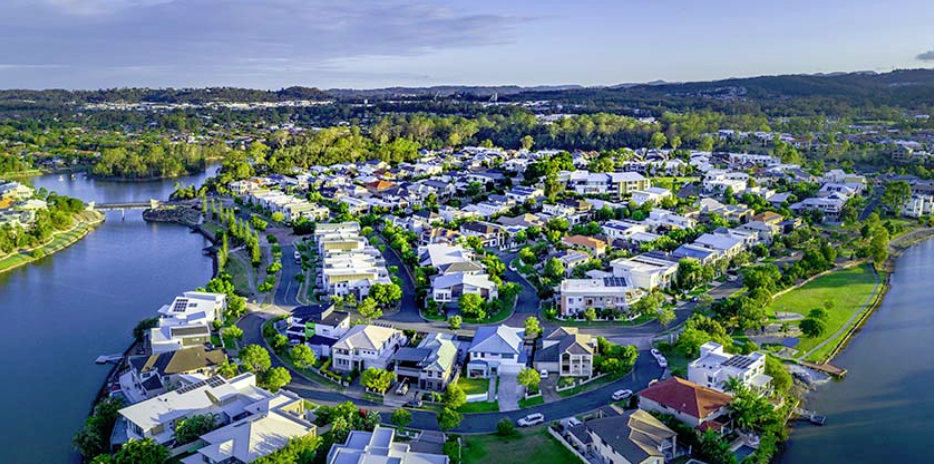The Australian Bureau of Statistics’ (ABS) lending indicators data for April 2021 has revealed that new loan commitments reached a new record once again, up 3.7 per cent to $31 billion.
The value of owner-occupier new loan commitments also reached the highest point in the series, up 4.3 per cent to $23 billion.
Values in this segment rose in NSW (8.6 per cent), Victoria (8.4 per cent), South Australia (5.3 per cent), and in Queensland (1.3 per cent), but declined by 7.9 per cent in Western Australia after falling by 5.1 per cent in March.
The ABS noted that the Building Bonus Grant (which was offered in Western Australia in addition to the HomeBuilder grant) ceased after 31 December 2020.
Investor lending has continued to trend upward since May 2020 (after a decline during the peak of the COVID-19 crisis in Australia in 2020), with ABS figures showing that the value of new loan commitments for investor housing rose 2.1 per cent to reach $8.1 billion, and reaching a level similar to 2017.
Values in investor lending rose in all states except Tasmania and the ACT. They increased by 7.1 per cent in Queensland, 2.5 per cent in NSW, and 2.2 per cent in Victoria, the figures showed.
But the data showed that the value of new loan commitments for the construction of new dwellings fell 11.4 per cent, the second consecutive month of falls since June 2020, when the federal government introduced the HomeBuilder grant.
The grant was reduced from $25,000 to $15,000, effective from 1 January 2021, and was closed to new applications from April 2021.
The value of new loan commitments for the purchase of new dwellings fell 1.4 per cent, the figures showed.
The number of owner-occupier first home buyer loan commitments fell by 1.9 per cent in seasonally adjusted terms to 15,171, marking the third consecutive month of decline.
However, the ABS said that the number of commitments has remained at their highest level since July 2009.
Commenting on the lending data, ABS head of finance and wealth Katherine Keenan said: “The rise in owner-occupier lending was driven by increased loan commitments for existing dwellings, which rose 9.2 per cent.
“Loan commitments to owner-occupiers for the construction of new dwellings fell by 11.4 per cent, following a fall of 14.8 per cent in March. These were the first monthly declines since the HomeBuilder grant was introduced in June 2020. However, the value of construction commitments remained at a high level.”
Housing Industry Association (HIA) economist Angela Lillicrap said that the continued increase in the number of owner-occupier loans for established dwellings (reaching the highest level since 2007) has demonstrated that confidence in the broad housing market has remained strong.
“Low interest rates and strong house price growth will continue to support demand for new housing,” Ms Lillicrap said.
However, she noted the second consecutive fall in the number of loans for the construction of a new dwelling in April, and said the decline was consistent across all states and territories.
She said: “This is the first ABS data to show that we are past the peak in the surge in the construction due to HomeBuilder.”
Across the states, compared to the same time last year, the number of loans for the construction of a new owner-occupied dwelling in the three months to April 2021 has more than tripled in Western Australia (230.5 per cent), almost tripled in South Australia (198.2 per cent) and Tasmania (185.8 per cent), more than doubled in Queensland (145.0 per cent), the Northern Territory (132.8 per cent) and the ACT (127.9 per cent), doubled in Victoria (99.4 per cent), and almost doubled in NSW (73.6 per cent), HIA’s analysis of ABS data showed.
Ms Lillicrap also said that FHB activity has retreated from its elevated levels.
“Until recently, first home buyers have been the driving force in the market as they took advantage of low interest rates and various government incentives,” Ms Lillicrap said.
According to Ms Lillicrap’s analysis of ABS data, the value of loans for renovations rose by 66.7 per cent in the three months to April 2021, compared with the same time last year.
“Households have diverted funds that would have typically been spent on overseas travel into buying a new home or improving their existing one,” she said.
[Related: Detached housing starts to hit record numbers: HIA]
 ;
;
